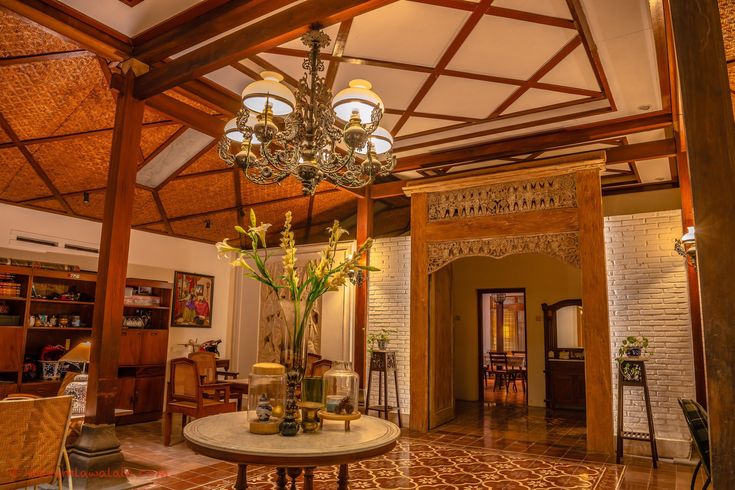Energy-Efficient Home Design Tips to Save on Bills
Energy-efficient home design has become an essential consideration for homeowners looking to reduce their utility bills and environmental footprint. With rising energy costs and growing awareness of climate change, designing a home that minimizes energy consumption is more important than ever. This comprehensive guide will explore various strategies, products, and technologies that can help you create an energy-efficient home. We’ll cover the benefits of adopting energy-efficient solutions, provide detailed information on top products, and offer practical tips for implementation. Whether you’re building a new home or retrofitting an existing one, these tips will help you save money and make a positive impact on the environment.
Understanding Energy Efficiency in Home Design

Energy efficiency refers to using less energy to perform the same task, thereby reducing energy waste. In home design, this concept extends to various elements, including insulation, windows, appliances, and heating and cooling systems. The goal is to optimize these components to use the least amount of energy possible while maintaining comfort and functionality.
The Importance of Energy Efficiency
Energy efficiency is crucial for several reasons. Firstly, it helps reduce greenhouse gas emissions, contributing to global efforts to combat climate change. Secondly, energy-efficient homes are more comfortable, with fewer drafts and more consistent temperatures. Finally, they can significantly reduce energy bills, making homeownership more affordable.
How Energy Efficiency is Measured
Energy efficiency is often measured using ratings and certifications. For example, the Energy Star label indicates that a product meets strict energy efficiency guidelines set by the U.S. Environmental Protection Agency. Additionally, energy ratings such as SEER (Seasonal Energy Efficiency Ratio) for air conditioners and AFUE (Annual Fuel Utilization Efficiency) for furnaces provide insights into the efficiency of specific systems.
Key Benefits of Energy-Efficient Home Design
Energy-efficient home design offers numerous benefits that extend beyond just financial savings. Let’s explore some of these advantages in more detail.
Financial Savings
One of the most significant benefits of energy-efficient home design is the potential for substantial financial savings. By reducing energy consumption, homeowners can lower their utility bills. Over time, these savings can offset the initial investment in energy-efficient products and improvements. For example, energy-efficient appliances and lighting can reduce electricity bills, while proper insulation can cut heating and cooling costs.
Environmental Impact
Energy-efficient homes contribute to environmental sustainability by reducing the demand for fossil fuels. This, in turn, lowers greenhouse gas emissions and other pollutants. For instance, using solar panels or other renewable energy sources can significantly reduce a home’s carbon footprint. Additionally, energy-efficient appliances and systems often require fewer resources to manufacture and maintain, further minimizing environmental impact.
Increased Home Comfort
Energy-efficient home design enhances comfort by maintaining consistent indoor temperatures and improving air quality. Proper insulation, for instance, prevents drafts and temperature fluctuations, creating a more comfortable living environment. Energy-efficient windows can reduce noise pollution, while smart thermostats allow for precise temperature control. Moreover, energy-efficient lighting and appliances often produce less heat, contributing to a cooler and more pleasant indoor climate.
Enhanced Property Value
Homes with energy-efficient features often have higher resale values. Buyers are increasingly looking for homes with energy-saving technologies, as they promise lower utility bills and a smaller environmental footprint. Energy-efficient certifications, such as LEED (Leadership in Energy and Environmental Design) or Energy Star, can further boost a property’s marketability. As a result, investing in energy-efficient upgrades can yield a significant return on investment when it’s time to sell.
Healthier Living Environment
Energy-efficient homes tend to have better indoor air quality. For example, properly sealed windows and doors prevent outdoor pollutants from entering the home. Additionally, energy-efficient HVAC systems often include advanced filtration options, reducing allergens and other airborne contaminants. Furthermore, the use of non-toxic building materials and finishes can contribute to a healthier living environment by minimizing exposure to harmful chemicals.
Top Energy-Efficient Products for Home Design
Choosing the right products is crucial for maximizing energy efficiency in your home. Here, we’ll explore some of the best options available, including their features, benefits, and potential drawbacks.
Smart Thermostats
Smart thermostats are a cornerstone of energy-efficient home design. These devices allow homeowners to control their heating and cooling systems remotely, optimizing energy use. For example, the Nest Learning Thermostat learns your schedule and adjusts the temperature accordingly, reducing energy consumption when you’re not home.
- Pros: Smart thermostats can significantly reduce energy bills by optimizing HVAC system operation. They offer convenience features like remote control and scheduling and can provide energy usage reports.
- Cons: The initial cost of smart thermostats can be relatively high, and they may require professional installation.
- Price: Approximately $249
- Features: Learning algorithms, remote control via smartphone, energy usage reports.
Energy-Efficient Windows
Energy-efficient windows are designed to minimize heat transfer, keeping your home warmer in winter and cooler in summer. Brands like Andersen Windows offer options with advanced glazing technologies, such as Low-E coatings and gas fills.
- Pros: These windows can significantly reduce heating and cooling costs, improve comfort, and protect furnishings from UV damage.
- Cons: They are more expensive than standard windows, and installation can be costly.
- Price: Ranges from $200 to $1,000 per window, depending on the features and materials.
- Features: Low-E coatings, double or triple glazing, inert gas fills, improved insulation.
Solar Panels
Solar panels convert sunlight into electricity, providing a renewable energy source for your home. Companies like SunPower offer high-efficiency solar panels that can significantly reduce or eliminate your electricity bills.
- Pros: Solar panels offer significant long-term savings and reduce reliance on fossil fuels. They can increase property value and may qualify for tax incentives.
- Cons: The upfront cost is high, and the installation requires space and proper orientation.
- Price: Typically ranges from $10,000 to $30,000, depending on the system size and installation costs.
- Features: High efficiency, long lifespan, monitoring systems, potential for grid-tied or off-grid setups.
Insulation
Proper insulation is essential for maintaining a consistent indoor temperature and reducing energy loss. Products from companies like Owens Corning provide various insulation options, including fiberglass and foam.
- Pros: Insulation can reduce heating and cooling costs, enhance comfort, and improve soundproofing.
- Cons: Some types of insulation require professional installation, and the materials can be costly.
- Price: Typically costs between $0.50 and $2 per square foot, depending on the type and thickness.
- Features: Various materials (fiberglass, foam, cellulose), different R-values, moisture resistance.
Energy-Efficient Appliances
Energy-efficient appliances use less electricity and water, helping to reduce utility bills. Brands like Samsung offer a wide range of Energy Star certified products, including refrigerators, washers, and dishwashers.
- Pros: These appliances are environmentally friendly, reduce energy and water consumption, and often come with advanced features.
- Cons: They can be more expensive than standard models, and the variety of options can be overwhelming.
- Price: Varies widely depending on the appliance type and features.
- Features: Energy Star certification, advanced features (e.g., smart connectivity, efficiency modes), durability.
Detailed Comparison Table
| Product | Use Case | Pros | Cons | Price | Features |
|---|---|---|---|---|---|
| Nest Learning Thermostat | Temperature control | Auto-schedule, remote control | High initial cost | $249 | Smart learning, energy history |
| Andersen Windows | Insulation and comfort | Reduces energy loss, UV protection | Higher initial investment | $200-$1,000 | Low-E coatings, double glazing |
| SunPower Solar Panels | Renewable energy | Significant savings, eco-friendly | High upfront cost, space needed | $10,000-$30,000 | High efficiency, long lifespan |
| Owens Corning Insulation | Temperature regulation | Reduces heating/cooling costs | Professional installation needed | $0.50-$2/sq ft | Various types, moisture resistance |
| Samsung Energy Star Appliances | Energy-efficient appliances | Low energy consumption | More expensive than standard models | Varies | Energy Star certified, durable |
How to Choose Energy-Efficient Products
Selecting the right energy-efficient products involves several considerations. Here are some essential factors to keep in mind:
Evaluating Your Needs
Start by assessing your home’s current energy usage and identifying areas where improvements can be made. For instance, if your heating and cooling bills are particularly high, investing in a smart thermostat or better insulation might be the best option. On the other hand, if your appliances are outdated, replacing them with energy-efficient models can provide substantial savings.
Considering Long-Term Savings
While energy-efficient products often come with a higher upfront cost, they can offer significant long-term savings. For example, solar panels may require a substantial investment, but they can pay for themselves over time through reduced electricity bills. Similarly, energy-efficient appliances consume less electricity and water, leading to lower utility bills.
Checking for Certifications
Look for products with energy efficiency certifications, such as Energy Star. These labels indicate that the product meets specific energy-saving criteria and can help you make informed decisions. Additionally, some products may qualify for rebates or tax incentives, further reducing the overall cost.
Comparing Features
Consider the features and capabilities of different products. For instance, smart thermostats may offer features like remote control, learning algorithms, and energy usage reports. Similarly, energy-efficient windows may come with advanced glazing options and gas fills for improved insulation.
Professional Installation
Some energy-efficient products, such as insulation and solar panels, may require professional installation. Be sure to factor in these costs when budgeting for your upgrades. Additionally, professional installation can ensure that the products are installed correctly and perform optimally.
The Role of Smart Home Technology in Energy Efficiency
Smart home technology has revolutionized the way we manage energy consumption. These systems provide convenience and allow for more precise control over energy usage. Let’s explore how smart home technology can enhance energy efficiency.
Smart Lighting
Smart lighting systems allow you to control your home’s lights remotely, set schedules, and even adjust the brightness. Brands like Philips Hue offer a wide range of smart bulbs and lighting solutions that can significantly reduce electricity consumption.
- Benefits: Smart lighting can reduce energy usage by allowing for more precise control. You can turn off lights remotely, set schedules, and adjust brightness levels. Some systems even have motion sensors that automatically turn lights on and off.
- Use Case: Ideal for homeowners looking to automate their lighting and reduce energy consumption. Smart lighting is especially useful in large homes where lights may be inadvertently left on.
Smart Appliances
Smart appliances, such as refrigerators, washers, and ovens, offer advanced features that can help reduce energy consumption. For instance, smart refrigerators can alert you if the door is left open, while smart ovens can be preheated remotely.
- Benefits: Smart appliances offer convenience and energy savings. They often come with energy-saving modes, alerts, and remote control capabilities. Some models can even provide energy usage reports.
- Use Case: Perfect for tech-savvy homeowners who want to monitor and control their appliances remotely. Smart appliances are particularly useful for busy households where energy-saving opportunities might be missed.
Smart HVAC Systems
Smart HVAC systems offer precise control over heating and cooling, optimizing energy use. Systems like Ecobee provide smart thermostats and sensors that can adjust temperatures based on occupancy and time of day.
- Benefits: Smart HVAC systems can significantly reduce heating and cooling costs. They offer features like zoning, remote control, and learning algorithms that optimize system performance.
- Use Case: Ideal for homes with varying temperature needs or multiple zones. Smart HVAC systems are particularly useful in regions with extreme temperature fluctuations.
How to Implement Energy-Efficient Home Design
Implementing energy-efficient home design requires careful planning and execution. Here’s a step-by-step guide to help you get started.
Assess Your Current Energy Usage
The first step in implementing energy-efficient home design is to assess your current energy usage. This can be done by reviewing your utility bills, conducting an energy audit, or using energy monitoring devices. Understanding your energy consumption patterns will help you identify areas for improvement.
Set Energy Efficiency Goals
Based on your energy assessment, set specific energy efficiency goals. For example, you might aim to reduce your heating and cooling costs by 20% or switch to renewable energy sources. Having clear goals will guide your decision-making process and help you measure your progress.
Choose the Right Products and Technologies
Select energy-efficient products and technologies that align with your goals. This may include upgrading your insulation, installing smart thermostats, or investing in solar panels. Be sure to consider the long-term benefits and potential savings of each option.
Plan for Installation
Some energy-efficient upgrades may require professional installation. For example, installing solar panels or upgrading your HVAC system typically requires specialized knowledge and equipment. Be sure to plan for these installations and consider any additional costs.
Monitor and Maintain
After implementing your energy-efficient upgrades, it’s essential to monitor their performance. Use energy monitoring devices or software to track your energy usage and identify areas for further improvement. Additionally, regular maintenance can ensure that your systems operate efficiently and extend their lifespan.
Real-World Examples of Energy-Efficient Home Design
To illustrate the impact of energy-efficient home design, let’s explore a few real-world examples. These case studies demonstrate how homeowners have successfully implemented energy-efficient solutions and the benefits they’ve achieved.
Example 1: The Smith Family’s Solar-Powered Home
The Smith family decided to install solar panels on their roof to reduce their reliance on the grid and lower their electricity bills. They chose high-efficiency panels from SunPower and opted for a grid-tied system with battery storage.
- Implementation: The installation process took about two weeks and included the setup of solar panels, inverters, and a battery storage system.
- Results: The Smith family reduced their electricity bills by 80%, and the battery system provided backup power during outages.
- Benefits: In addition to financial savings, the family significantly reduced their carbon footprint and gained energy independence.
Example 2: The Johnsons’ Smart Home Transformation
The Johnson family invested in a range of smart home technologies, including a smart thermostat, smart lighting, and energy-efficient appliances. They chose products from brands like Nest and Philips Hue.
- Implementation: The installation included setting up a smart home hub, connecting devices, and configuring automation routines.
- Results: The Johnsons saw a 25% reduction in their energy bills, improved comfort, and enhanced convenience.
- Benefits: The smart home system allowed for precise control of energy usage, remote monitoring, and automation of routine tasks.
Example 3: The Green Family’s Insulation Upgrade
The Green family focused on improving their home’s insulation to reduce heating and cooling costs. They chose Owens Corning insulation products and opted for a combination of fiberglass and foam insulation.
- Implementation: The project involved insulating the attic, walls, and basement. The installation was completed by a professional contractor.
- Results: The Greens experienced a 30% reduction in heating and cooling costs and improved indoor comfort.
- Benefits: The upgraded insulation minimized drafts, reduced noise, and contributed to a more energy-efficient home.
Detailed Use Cases for Energy-Efficient Products
Energy-efficient products can address various challenges and needs within a home. Here are some detailed use cases that highlight the benefits and applications of these products.
Use Case 1: Reducing Heating and Cooling Costs
One of the most common uses for energy-efficient products is reducing heating and cooling costs. Smart thermostats, energy-efficient windows, and proper insulation can all contribute to maintaining a consistent indoor temperature and reducing energy consumption.
- Products: Smart thermostats, energy-efficient windows, insulation.
- Benefits: Lower utility bills, improved comfort, reduced energy waste.
- Challenges: Initial costs and installation complexities.
Use Case 2: Enhancing Home Security and Convenience
Smart home technologies, such as smart lighting and smart locks, can enhance security and convenience. These systems allow homeowners to monitor and control their home remotely, providing peace of mind and making daily tasks easier.
- Products: Smart lighting, smart locks, security cameras.
- Benefits: Increased security, convenience, and energy savings.
- Challenges: Potential privacy concerns and the need for a stable internet connection.
Use Case 3: Transitioning to Renewable Energy
Many homeowners are interested in transitioning to renewable energy sources, such as solar power. Solar panels provide a sustainable energy solution and can significantly reduce or eliminate electricity bills.
- Products: Solar panels, inverters, battery storage systems.
- Benefits: Reduced reliance on fossil fuels, lower electricity bills, potential tax incentives.
- Challenges: High upfront costs and space requirements for installation.
How to Buy Energy-Efficient Products
Purchasing energy-efficient products involves several considerations, from choosing the right products to finding reputable sellers. Here’s a guide to help you navigate the buying process.
Research and Compare
Start by researching different products and comparing their features, benefits, and prices. Look for energy efficiency ratings, certifications, and customer reviews. Websites like Energy Star and Home Depot offer detailed product information and comparison tools.
Consider Rebates and Incentives
Many energy-efficient products qualify for rebates, tax incentives, and other financial benefits. Check with your local utility company, government programs, and manufacturers for available offers. These incentives can significantly reduce the overall cost of your purchase.
Choose Reputable Retailers
When purchasing energy-efficient products, it’s essential to choose reputable retailers. Major retailers like Amazon, Best Buy, and Home Depot offer a wide range of energy-efficient products. Additionally, consider purchasing directly from manufacturers or authorized dealers to ensure product authenticity and warranty coverage.
Plan for Installation
Some energy-efficient products, such as solar panels and insulation, may require professional installation. Be sure to factor in these costs and schedule the installation with a qualified contractor. Proper installation is crucial for ensuring the products perform optimally and provide the desired energy savings.
Monitor and Maintain
After purchasing and installing energy-efficient products, it’s essential to monitor their performance and maintain them regularly. This includes checking for software updates, cleaning filters, and scheduling routine maintenance. Proper care can extend the lifespan of your products and maximize their energy-saving potential.






